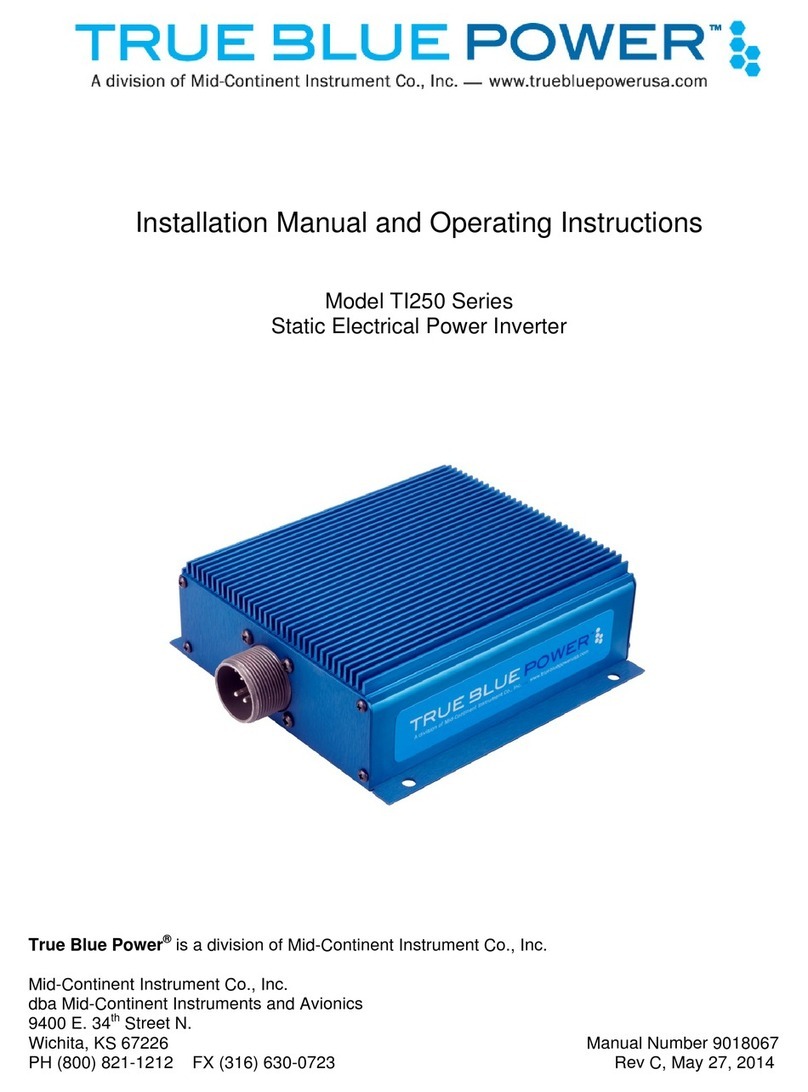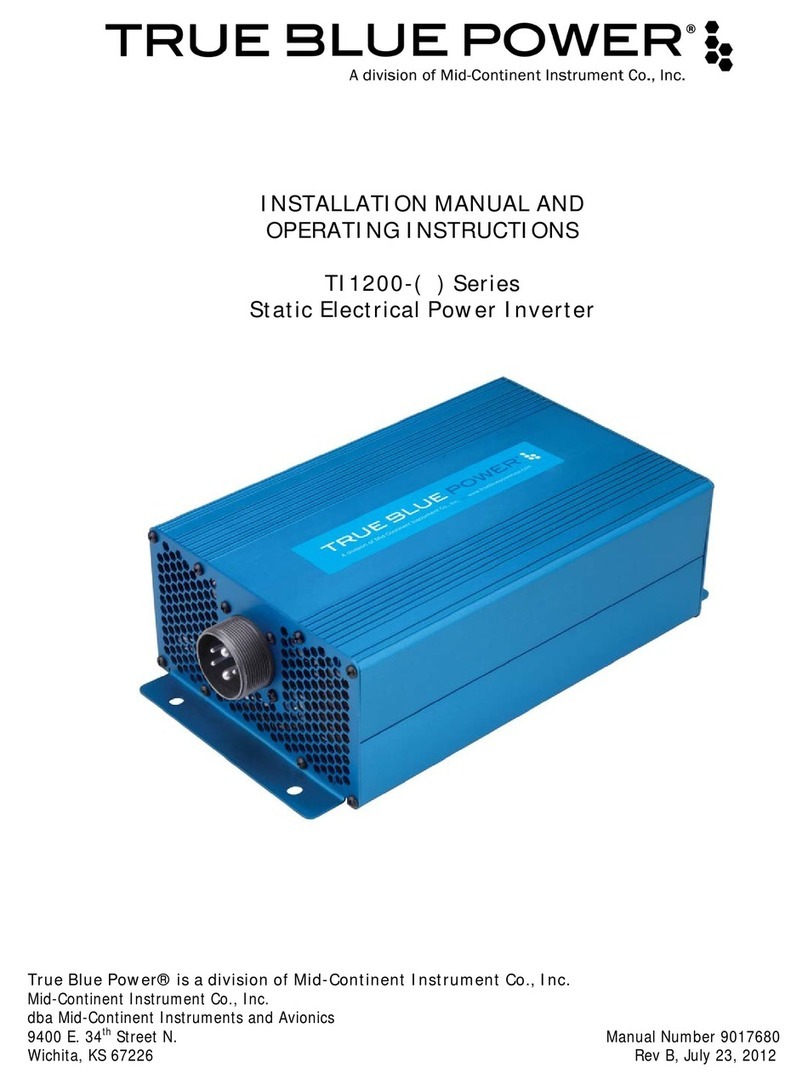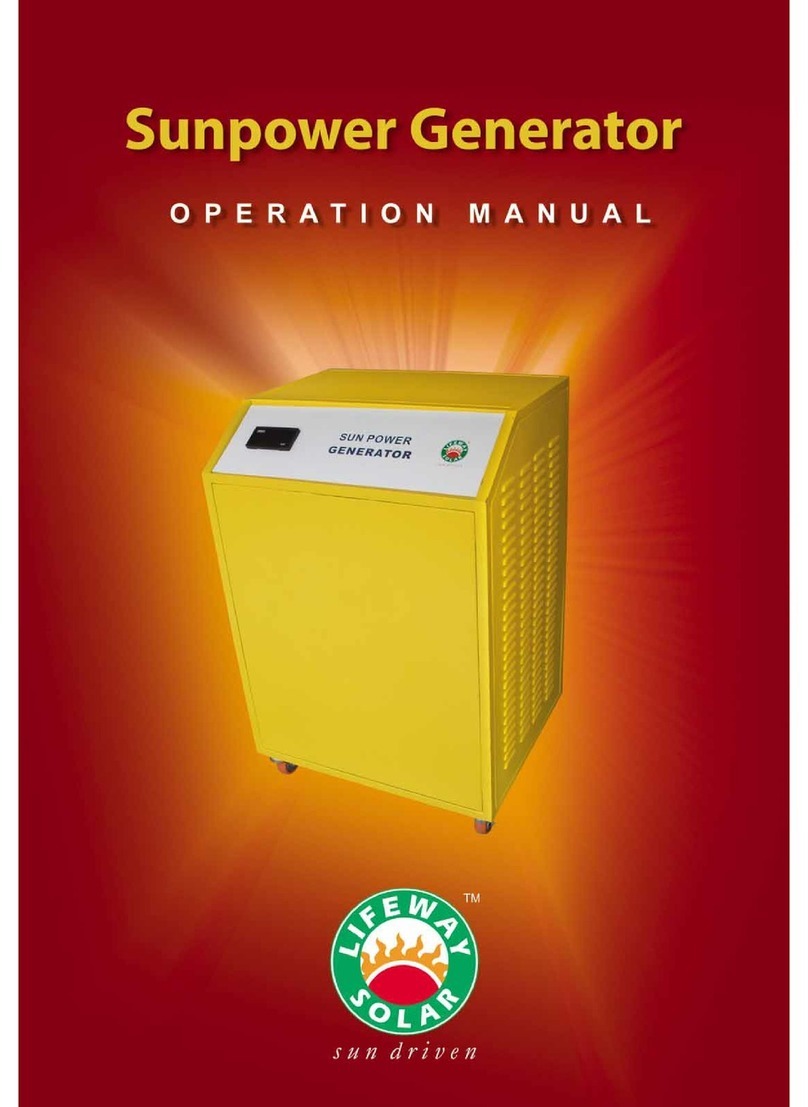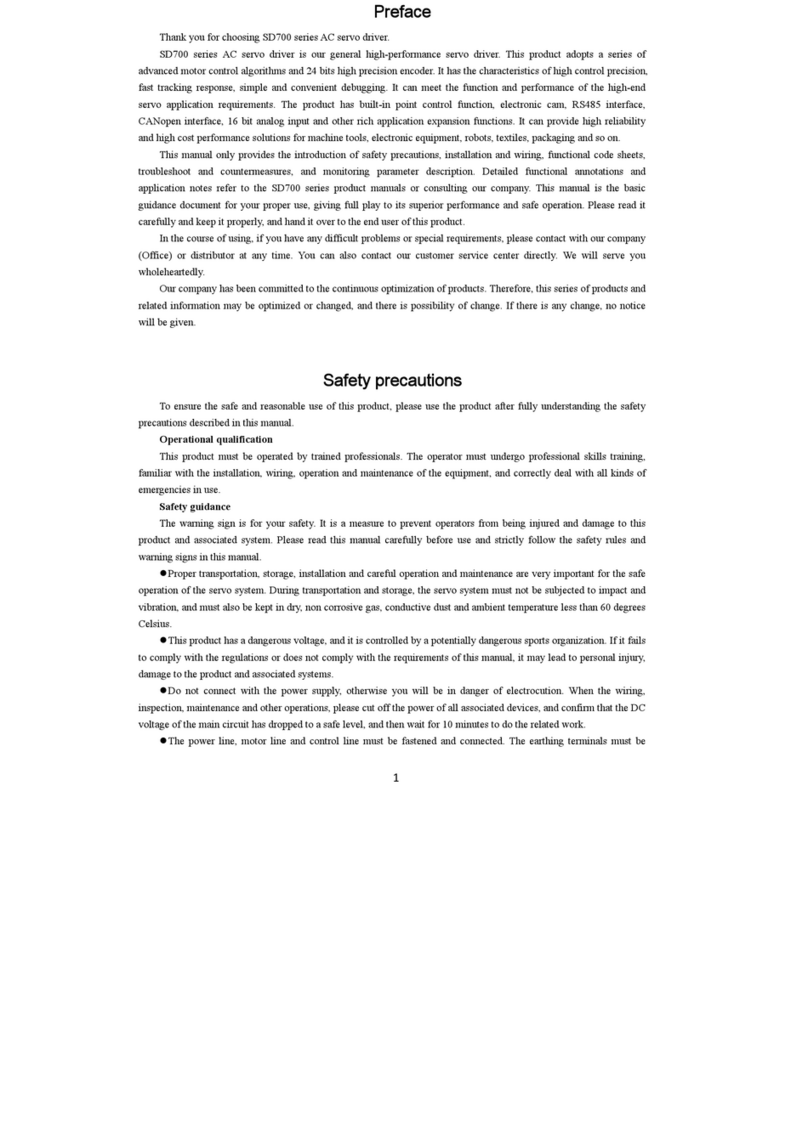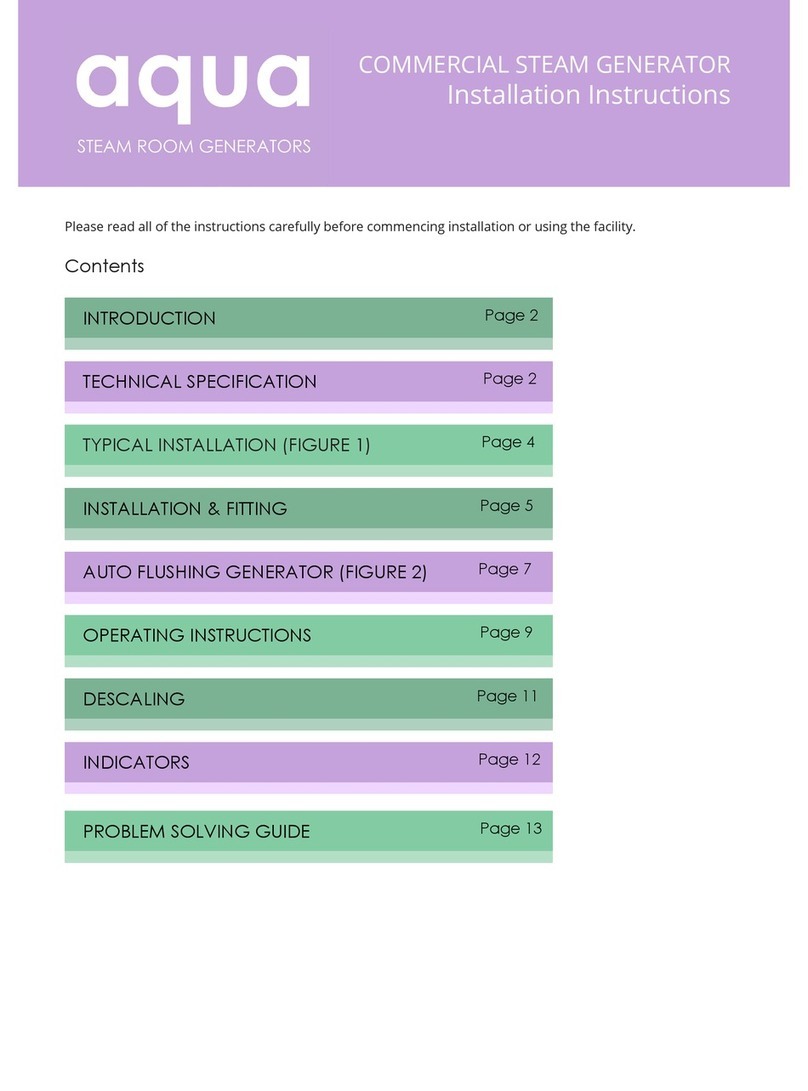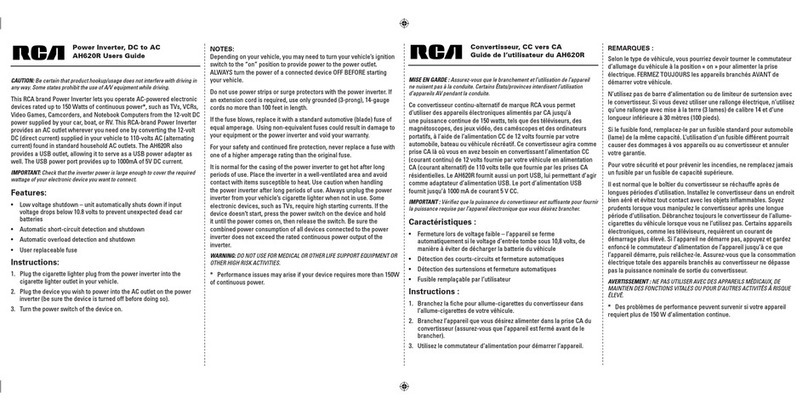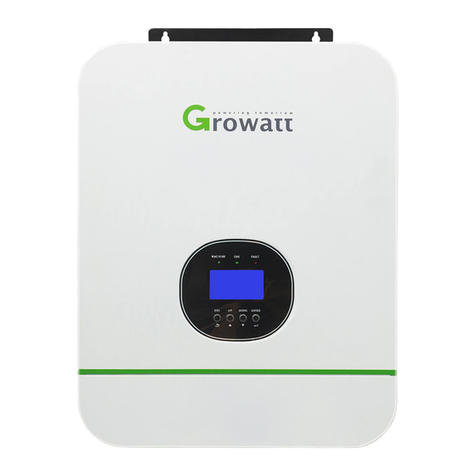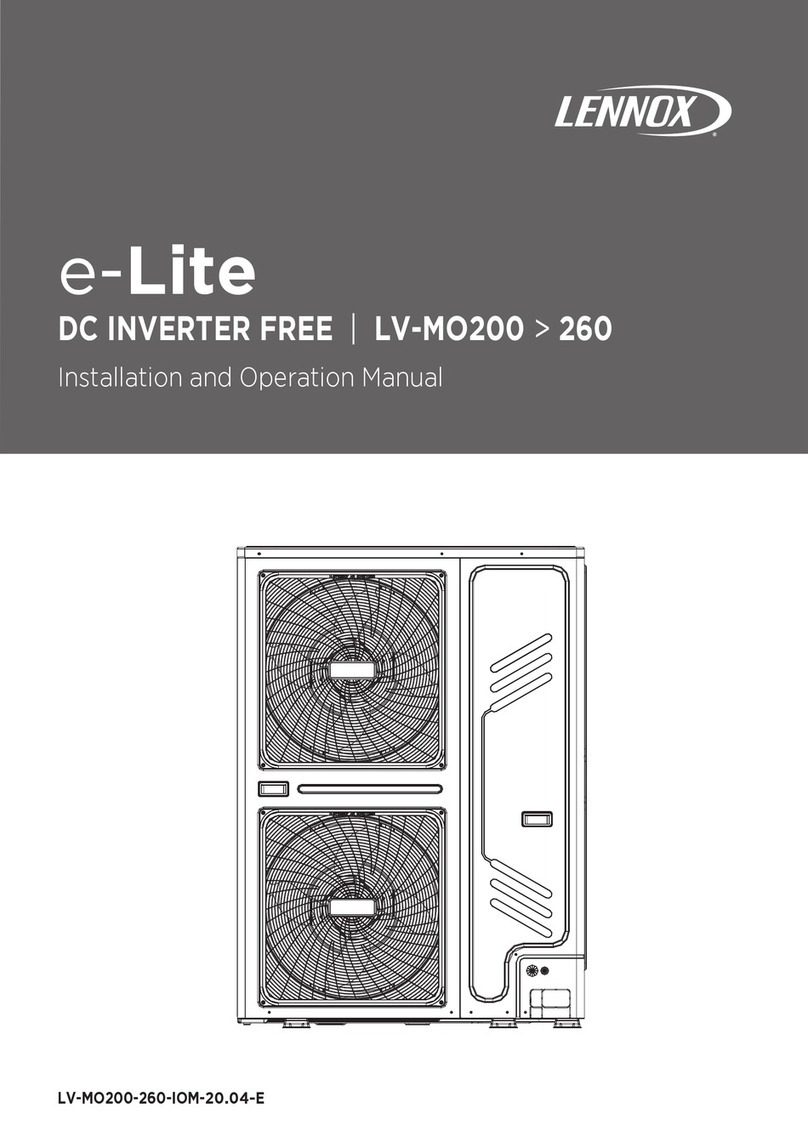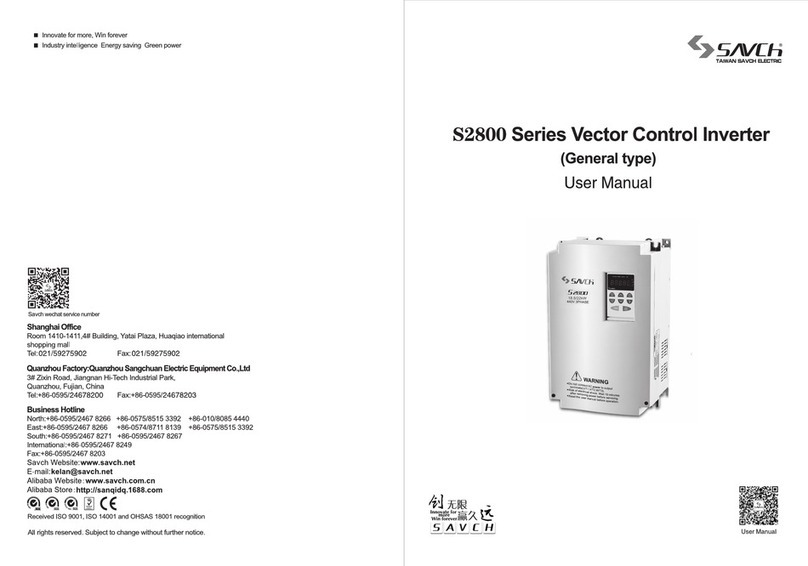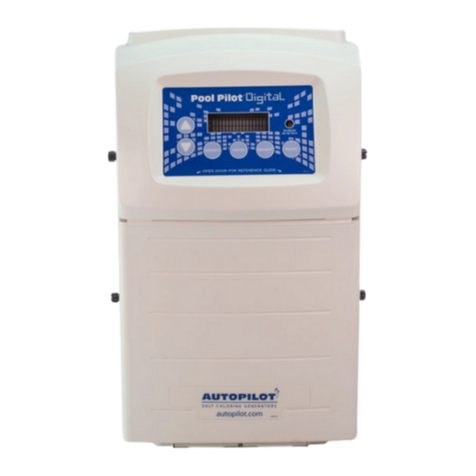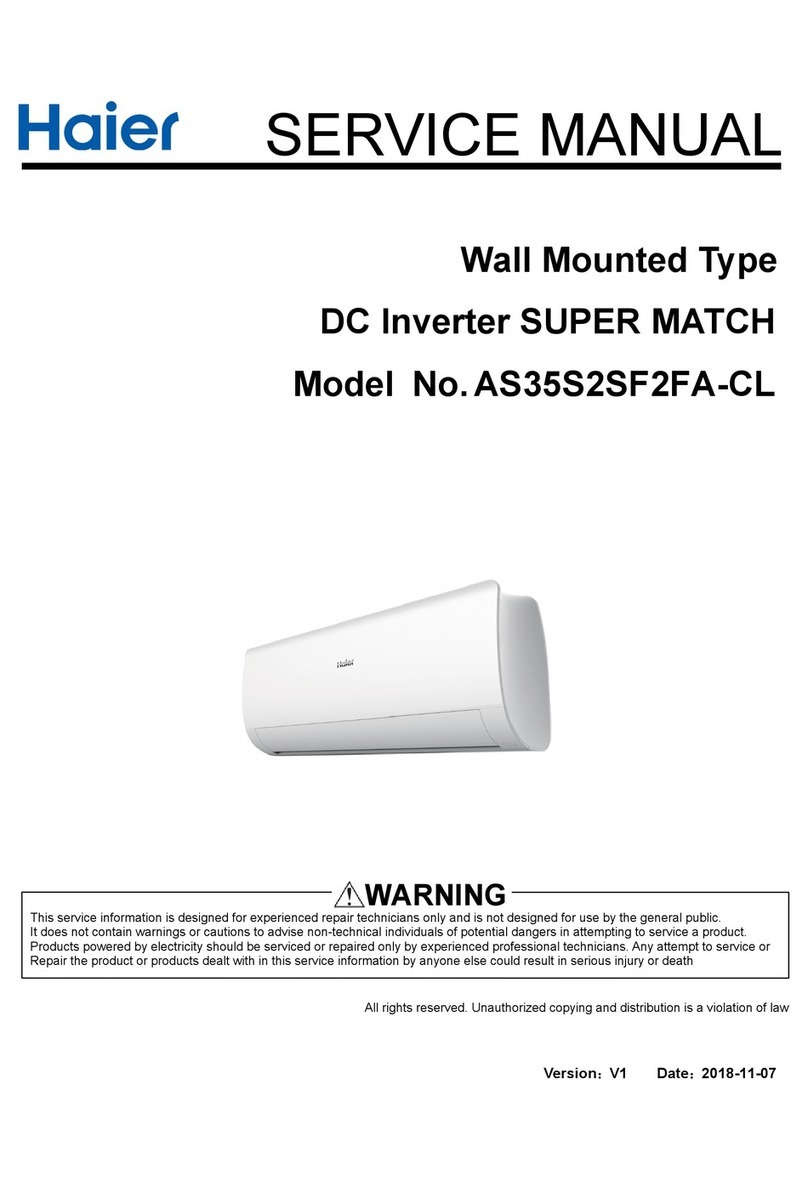True blue power TI250 Series Technical Document

Revision J • May 4, 2020

1 Manual Number 9018067 • Revision J, May 4, 2020
FOREWORD
This manual provides information intended for use by persons who, in accordance with current
regulatory requirements, are qualified to install this equipment. If further information is required,
please contact:
True Blue Power
c/o Mid-Continent Instrument Co., Inc.
Attn: Customer Service Dept.
9400 E. 34th St. N.
Wichita, KS 67226 USA
Phone 316-630-0101
Fax 316-630-0723
www.truebluepowerusa.com
www.mcico.com
We welcome your comments concerning this manual. Although every effort has been made to
keep it free of errors, some may occur. When reporting a specific problem, please describe it
briefly and include the manual part number, the paragraph/figure/table number and the page
number. Send your comments to:
True Blue Power
c/o Mid-Continent Instrument Co., Inc.
Attn: Technical Publications
9400 E. 34
th
St. N.
Wichita, KS 67226 USA
Phone 316-630-0101
Fax 316-630-0723
© Copyright 2017
Mid-Continent Instrument Co., Inc.
Download the current
version of this
installation manual
using your
smartphone or tablet.

2 Manual Number 9018067 • Revision J, May 4, 2020
TABLE OF CONTENTS
SECTION 1GENERAL DESCRIPTION 4
1.1INTRODUCTION 4
1.2TECHNICAL SPECIFICATIONS 5
SECTION 2PRE-INSTALLATION CONSIDERATIONS 6
2.1COOLING 6
2.2EQUIPMENT LOCATION 6
2.3ROUTING OF CABLES 6
2.4LIMITATIONS 6
2.5MODIFICATION 7
SECTION 3INSTALLATION 8
3.1GENERAL INFORAMATION 8
3.2UNPACKING AND INSPECTING EQUIPMENT 8
3.3CABLE HARNESS 8
3.4MOUNTING 13
3.5INSTALLATION COMPLETION 13
3.6INSTALLATION CAUTION 14
SECTION 4OPERATION 15
4.1ELECTRICAL PERFORMANCE 15
4.2PROTECTIVE FEATURES 15
SECTION 5CONFORMANCE 17
5.1INSTRUCTIONS FOR CONTINUED AIRWORTHINESS 17
5.2ENVIRONMENTAL QUALIFICATION STATEMENT 17

3 Manual Number 9018067 • Revision J, May 4, 2020
REVISION HISTORY
Rev Date Detail Approved
A 12/10/2013 Initial release BAW
B 02/11/2014 Revised Technical Specifications BMC
C 05/27/2014 Revised Section 3.3.1, Wire Gauge Selection BMC
D 01/02/2015 Added TI254 and TI256 models BMC
E 05/11/2015 Added -4 Configuration BMC
F 06/16/2015 Updated -4 Configuration specifications BMC
G 01/06/2017 Update connector Pinout Table to agree with the input
voltage in the Specification Table. CAS
H 07/26/2019 Updated altitude in Table 1.3 and Qualification sheet. VAA
J 05/04/2020 Updated style and brand to meet Marketing and
Engineering guidelines. DLR

4 Manual Number 9018067 • Revision J, May 4, 2020
SECTION 1 GENERAL DESCRIPTION
1.1 INTRODUCTION
The model TI250 Series Static Electrical Power Inverter is a lightweight power inverter that
translates a 20 to 36 VDC input to three various output options:
Model Part Number Output
TI250 6430250-1 115 VAC, 60 Hertz
TI254 6430250-2 115 VAC, 400 Hertz
TI256 6430250-3 115/26 VAC, 400 Hertz
TI256 6430250-4 115/26 VAC, 400 Hertz with sync capability
All three configurations provide 250 watts (VA) of power. The alternating current output is defined
as a pure sine wave with less than 2% of total harmonic distortion for clean, noise-free, harmonic-
free power to supply loads of corresponding voltage, power and frequency. For the TI250, the
115VAC, 60 Hertz (Hz) is suitable for nearly any common commercial or consumer load rated for a
nominal input of 110-120VAC. The TI254 and TI256 are designed for 115VAC outputs with an AC
frequency of 400 Hz for common avionics and related equipment, with the TI256 also providing an
additional independent 26VAC output and optional dual-unit synchronization. The TI250 Series
Static Inverter is FAA certified to TSO C73 and tested to rigorous environmental standards and
levels of RTCA DO-160. The small size and light weight in conjunction with its installation flexibility
(inside or outside the pressure vessel) make it an ideal choice for aircraft power needs while
reducing the challenges associated with other similar products.
Highlighted features include short circuit protection, overload capability, low voltage shut-down,
temperature monitoring, a self-resettable over-temperature disable, a remote on/off function, and a
fault indication output. The TI250 Series has the same connector of legacy designs plus ground
fault interrupter protection. The rugged extrusion that houses the unit is designed to help dissipate
heat and provide mechanical strength against vibration or other possibilities of damage. The TI250
Series is engineered to run cooler and requires no active cooling, featuring a fanless design, which
saves energy, reduces weight and allows flexible installation locations. At only 2.5 pounds or less,
it is lighter and smaller than competing inverters. Additionally, the primary stage of the TI250
Series utilizes current mode control for increased reliability and safety.

5 Manual Number 9018067 • Revision J, May 4, 2020
1.2 TECHNICAL SPECIFICATIONS
Electrical Attributes
Model
TI250
Model
TI254 Model TI256 Model TI256
Input Voltage 28VDC nominal; 20-36VDC 18-36VDC
Input Current (full load) 10 amps nominal; 15 amps max 20A max
Input Current (no load) 150 milliamps
Input Current (ON/OFF = OFF) 50 milliamps
Recommended Circuit Breaker 15 amps
Output Voltage
115VAC
±3% at 60
Hertz ±0.1%
115VAC
±3% at 400
Hertz ±0.1%
115/26VAC
±3% at 400
Hertz ±0.1%
115/26VAC
±3% at 400
Hertz ±0.1%
Output Power 250 watts (250 VA at power factor = 1)
Output Waveform Single phase, pure sine wave
Power Factor -0.8 to +0.8
Efficiency 87 – 90% nominal
Total Harmonic Distortion
(THD) Less than 2%
Table 1.1
Physical Attributes
Model TI250 Model TI254 Model TI256 Model TI256
Weight: 2.2 lbs
(1 kg)
2.2 lbs
(1 kg)
2.6 lbs
(1.15 kg)
2.6 lbs
(1.15 kg)
Dimensions:
(not including connector mate)
6.7 inches long x 6.0 inches wide x 2.0 inches high
(171 mm long x 152 mm wide x 51 mm high)
Mating Connector (and cable
clamp): MS3106A-18-9S (MCI P/N 9016905-1, -2)
Mounting: Base mount – orientation not critical
Table 1.2
Qualifications
Model TI250 Model TI254 Model TI256 Model TI256
Certification: FAA TSO-C73
Environmental Qualification: RTCA DO-160G Environmental Category; See Section 5.2
Altitude: -15,000 feet to +70,000 feet
Temperature: -55°C to +70°C (-67°F to +158°F)
Table 1.3

6 Manual Number 9018067 • Revision J, May 4, 2020
SECTION 2 PRE-INSTALLATION CONSIDERATIONS
2.1 COOLING
The TI250 Series does not require external cooling or contain internal active cooling. Cooling of the
unit occurs exclusively through passive conduction through the base or radiated cooling across the
metal case. Additional cooling can be realized through convective effects of the environment
(exposure to free moving air). These methods are not required to achieve rated performance but
can help prevent potential overheating and extend life when the unit is operated at full power or
during overload conditions. Specifically, mounting the unit to a metal surface is preferred, but not
required.
2.2 EQUIPMENT LOCATION
The TI250 Series is designed for mounting flexibility, allowing for installation inside or outside the
pressure vessel with no requirement for temperature control. In addition to altitude and
temperature resistance, the unit is also designed to withstand high levels of condensing humidity.
However, installation locations where the unit could be subject to standing or direct water exposure
should be avoided. The unit can be mounted in any orientation. Clearance should be provided for
the mating connector and may require as much as five inches past the unit connector to allow for
back shell access to the connector.
2.3 ROUTING OF CABLES
The wires and cable bundle associated with the unit are heavy gauge wire and carry significant
power. Be aware of routing cables near other electronics or with other wire bundles that may be
susceptible to high energy flow.
Avoid sharp bends in cabling and routing near aircraft control cables. Also avoid proximity and
contact with aircraft structures, avionics equipment, or other obstructions that could chafe wires
during flight and cause undesirable effects.
2.4 LIMITATIONS
The TI250 Series of static electric power inverters is certified to FAA TSO-C73 with the following
limitations identified:
1) Alternating current (AC) output is provided at 115 volts and 60 hertz in lieu of 115 volts and
400 hertz as identified in the MPS of the TSO.
2) Equivalent environmental qualification was verified per RTCA DO-160G in lieu of those
identified within the MPS of the TSO.
The conditions and tests for TSO approval of this article are minimum performance standards.
Those installing this article, on or in a specific type or class of aircraft, must determine that the
aircraft installation conditions are within the TSO standards, specification of the article, and
deviations as listed above. TSO articles must have separate approval for installation in an aircraft.
The article may be installed only according to 14 CFR part 43 or the applicable airworthiness
requirements.

7 Manual Number 9018067 • Revision J, May 4, 2020
2.5 MODIFICATION
This product has a nameplate that identifies the manufacturer, part number, description,
certification(s) and technical specifications of the unit. It also includes the “MOD” or modification
number representing notable changes in the hardware design of the unit.
Modification (MOD) 0 is the initial release of the product and is identified on the nameplate by the
lack of marking on the MOD numbers 1 through 9 (i.e. 1-9 are visible). All subsequent
modifications are identified on the nameplate by the marking/blacking out of that particular MOD
number (i.e. for MOD 1, the number 1 is not visible and 2-9 are visible - see Figure 2.1 for
examples). MODs do not have to be sequentially inclusive and may be applied independent of
each other.
For additional details regarding specific changes associated with each MOD status refer to the
product published Service Bulletins at www.truebluepowerusa.com.
Figure 2.1
Nameplate and MOD Status Example
MOD 0
MOD 1
MOD 1
& MOD 2

8 Manual Number 9018067 • Revision J, May 4, 2020
SECTION 3 INSTALLATION
3.1 GENERAL INFORAMATION
This section contains interconnect diagrams, mounting dimensions and other information
pertaining to the installation of the TI250 Series Static Inverter. After installation of cabling and
before installation of the equipment, ensure that power is applied only to the pins specified in the
interconnect diagram.
3.2 UNPACKING AND INSPECTING EQUIPMENT
When unpacking this equipment, make a visual inspection for evidence of any damage that may
have incurred during shipment. The following parts should be included:
A. Static Inverter MCI P/N 6430250-( )
B. Mating Connector (& cable clamp) MCI P/N 9016905-1 and 9016905-2
C. Installation Manual MCI P/N 9018067
Equipment not provided:
A. Mounting Hardware four (4) 10-24 pan head screws
¼” lock washers (optional)
B. Cable Harness Wire See Section 3.3 for specifications
3.3 CABLE HARNESS
Construct the cable harness with regards to the instructions below, and using the Connector Pinout
of Figure 3.3, Figure 3.4, and Wiring Diagram of Table 3.3.
Refer to Section 2: Pre-Installation Considerations in regards to routing precautions.
Wire Gauge Selection
Use of PTFE, ETFE, TFE, Teflon, or tefzel insulated wire is recommended for aircraft use.
Use the following wire gauges for each of the pins in the connector:
Pin A and D – 12-14 AWG stranded or solid
Pin B and C – 18-20 AWG stranded or solid
Pin E and F – 18-24 AWG stranded or solid
Suggestion: If the TI250 is installed in an application where the pin-compatible 500 Watt
MD50 inverter may be later used; the larger wire gauge sizes of the MD50 can be used.
Pin Assignment Information
INVERTER INPUT POWER:
Positive DC input – +24 to 32 VDC. Connect to the aircraft 28 VDC bus using a 15 Amp
circuit breaker.
Negative DC input – Connect to aircraft ground.
Note: Two common practices for the connecting the -28V of power devices in aircraft are:
The negative lead connects from the device to the negative power bus.
The negative lead connects from the device to the negative power bus, and a second lead
connects to the aircraft structure close to the power device.
The TI250 Series passes DO160G Section 21 Table 1.2.3 conducted emissions testing
using both methods.

9 Manual Number 9018067 • Revision J, May 4, 2020
INVERTER AC OUPUT:
AC Return – Used for powering devices where terrestrial/utility power designations are
used, pin C can be connected as “Neutral”.
AC Output – Used for powering devices where terrestrial/utility power designations are
used, pin B can be connected as “Line” or “Hot”.
Note: Use of a circuit breaker on the AC output is optional. For the full output of 250VA, a
2.5 Amp circuit breaker is sufficient. For convenience at each AC outlet, individual circuit
breakers of 1 to 3 amps each can be used. If a single pole breaker is used, install the
breaker on the wire from pin B. If a double pole breaker is installed, route both pins B and C
through the circuit breaker.
INVERTER REMOTE ON/OFF CONTROL: (see section 4.2.1)
Remote ON/OFF Control – Connecting this pin to either DC Negative or to aircraft ground
will enable the AC output of the inverter. By utilizing a switch between this pin and ground
or negative, it will allow remote on/off control of the unit. When unconnected (output is
OFF) this pin will have approximately 16 VDC present, internally limited to less than 3 mA.
If the inverter is to be enabled at all times, pin E can be connected to pin G.
Remote ON/OFF Return – This pin is internally connected to pin D. Pin G may be used
as the return from an ON/OFF switch or left unconnected. It is recommended that pin G not
be connected directly to ground or 28V negative.
INVERTER FAULT INDICATION OUTPUT:
Fault Indication Output (-1/2/3 only) – This pin can be connected to an external LED or
status monitoring device to indicate the operating status of the inverter. The inverter will
provide Fault indication when: Power Output capability has been exceeded, the output has
been short-circuited, the output is ground-faulted (GFI protection activated), or the inverter
has shut-down in over-temperature protection. The output is an open-collector transistor
with a weak pull-up to 28V (21K ohm) capable of sinking 100 mA.
Phase Sync (-4 only) – Two TI256 units may be synchronized by connecting these pins
together on each unit. This configuration will ensure the 115 VAC (and 26 VAC) outputs on
each unit are phase locked within 5°.
Note: The AC outputs are not designed to be connected in parallel with other units
regardless of the optional phase sync function.

10 Manual Number 9018067 • Revision J, May 4, 2020
-1 -2
A
20-36VDC Input 20-36VDC Input
B 115VAC Output 115VAC Outpu
t
C
A
C Return
A
C Return
D DC Return DC Return
E Remote On/Off Fault Indication
F Fault Indication Rem ote On/Off
G Remote Return Reserved
-3 -4
A
20-36VDC Input DC Return
B 115VAC Output
A
C Return
C
A
C Return Remote On/Off
D DC Return 18-36VDC Input
E Fault Indication 26VAC Output
F Remote On/Off Phase Sync
G 26VAC Output 115VAC Outpu
t
Connector Pinout
Figure 3.4A: Typical TI250 Small Aircraft Minimum Wiring Installation
A
D
B
E
C
F
G
Figure 3.3
Pinout View of Unit Connector
Table 3.3
Connector Pinout
OUTLETS
A
D
G
E
B
C
28VDC
INVERTER
ENABLE
ON
OFF
TI250 15A
Optional
Breaker
110VAC
F
2.5A
CASE ATTACHED -OR-
NOT ATTACHED TO AIRFRAME
HOT
NEU
6430250-1

11 Manual Number 9018067 • Revision J, May 4, 2020
Figure 3.4B: Typical TI250 Aircraft Wiring Installation
Figure 3.4C: Typical Installation (400 Hz; Fixed Equipment)
TI254 A
D
G
F
B
C
28VDC
INVERTER
ALWAYS
15A
E
1.5K 1W
FAULT
LED
CASE ATTACHED -OR-
NOT ATTACHED TO AIRFRAME
AIRCRAFT
MONITORING
SYSTEM
FIXED
AIRCRAFT
EQUIPMENT
ENABLED
2.5A
6430250-2
TI250 A
D
G
E
B
C
28VDC
INVERTER
ENABLE
ON
OFF
15A
F
1.5K 1W
FAULT
LED
CASE ATTACHED -OR-
NOT ATTACHED TO AIRFRAME
OUTLETS
110VAC
1A
NEU
HOT
6430250-1

12 Manual Number 9018067 • Revision J, May 4, 2020
Figure 3.4D: Fully-Integrated Multi-Inverter Aircraft Cabin System
Figure 3.4E: Typical Installation (115VAC and 26VAC; Fixed Equipment)
A
D
G
E
B
C
28VDC
TI250 15A
F
CASE ATTACHED -OR-
NOT ATTACHED TO AIRFRAME
OUTLET
Optional
Breaker
110VAC
2.5A
HOT
NEU
AIRCRAFT
CABIN
ACCESSORIES
SYSTEM
6430250-1
TI256 A
D
F
G
C
B
28VDC
15A
E
1.5K 1W
FAULT
LED
CASE ATTACHED -OR-
NOT ATTACHED TO AIRFRAME
AIRCRAFT
MONITORING
SYSTEM
115V 400Hz
EQUIPMENT
6430250-3
3A
26V 400Hz
EQUIPMENT
2.5A

13 Manual Number 9018067 • Revision J, May 4, 2020
Figure 3.4F: Dual 400 Hz Synced Installation
Note: The AC outputs are not designed to be connected in parallel with other units
regardless of the optional phase sync function.
Example Wiring Diagrams
The inverter is flexible in the wiring installation allowing for it to be integrated into the
aircraft according to the application needs. Several examples are shown in the diagrams.
Harness Verification
With the TI250 Series Static Inverter disconnected, activate the aircraft power bus that
supplies the unit and use a multi-meter to verify that aircraft power and ground with
appropriate voltage is on the pins within the mating harness.
3.4 MOUNTING
Refer to Section 2: Pre-Installation Considerations in regards to equipment location.
The TI250 Series Static Inverter is designed for base mounting only. Four #10 mounting holes
should be provided in the aircraft in accordance with Figure 3.5. Secure the unit with four #10 pan
head Phillips screws, or equivalent. A lock washer under the head of each screw is recommended.
3.5 INSTALLATION COMPLETION
Prior to operating the unit in the aircraft, it is recommended to verify the output and functionality of
the unit. In order to prevent accidental damage to other systems, it is best not to attach the output
to other equipment or power busses prior to verification. Verify the output of the unit at the
terminating end of the cable with a multi-meter to ensure proper voltage and polarity. Once
verified, installation can be completed and functionality of the remote on/off feature (if used) should
be checked.
TI256 D
A
C
E
B
G
28VDC
15A
F
CASE ATTACHED -OR-
NOT ATTACHED TO AIRFRAME
115V 400Hz
EQUIPMENT
6430250-4
3A
26V 400Hz
EQUIPMENT
2.5A
TI256
CASE ATTACHED -OR-
NOT ATTACHED TO AIRFRAME
6430250-4
115V 400Hz
EQUIPMENT
26V 400Hz
EQUIPMENT
D
A
C
E
B
G
F
3A
2.5A
15A
PHASE SYNCHRONIZED
EQUIPMENT

14 Manual Number 9018067 • Revision J, May 4, 2020
3.6 INSTALLATION CAUTION
Do not connect the output of the TI250 Series Static Inverter to the output of any other inverter or
damage will result. Under no circumstance allow the output of the inverter to be connected to
ground utility AC power or damage will result. If more than 250 watts of power is required for an
installation, a higher power inverter model such as the 500 watt Mid-Continent MD50 should be
selected.
Connector per
MS3102A-18-9P
2.0
4.75
5.0
5.50
5.94
(4X) Ø.22
10-32 Mounting Holes
6.0
0.7
Figure 3.5
TI250 Series Static Inverter Outline Drawing

15 Manual Number 9018067 • Revision J, May 4, 2020
SECTION 4 OPERATION
4.1 ELECTRICAL PERFORMANCE
The TI250 Series Static Inverter converts a direct current (DC) voltage input to a regulated VAC
output; the output is controlled to an established frequency and represents a pure sine wave with
minimal distortion. See Table 4.1 specific output and frequency.
Model Part Number Input Output Frequency
TI250 6430250-1 20-36 VDC 115 VAC 60 Hz
TI254 6430250-2 20-36 VDC 115 VAC 400 Hz
TI256 6430250-3 20-36 VDC 115/26 VAC 400 Hz
TI256 6430250-4 18-36 VDC 115/26 VAC 400 Hz
Table 4.1
TI250 Series Electrical Performance
The unit is capable of providing 250 watts to power a variety of aircraft accessories including
laptops, personal electronics, and onboard systems. (See Section 1.2.1 for tolerance ranges)
The unit is designed as a two-stage, solid-state switch-mode power supply. The power
transformation utilizes a first-stage push-pull methodology followed by an H-bridge AC forming
second stage. The primary stage utilizes ‘current-mode’ control providing instantaneous load
protection as an advantage over legacy designs that incorporate ‘voltage-mode’ controllers.
Additionally, the AC output stage controls both the current and voltage of the output AC waveform
providing a low-distortion sine wave output even over varying power factor requirements of the
load. The AC output is frequency controlled using a crystal oscillator reference.
4.2 PROTECTIVE FEATURES
Remote On/Off
The TI250 Series Static Inverter incorporates a remote on/off feature that allows the user to
enable or disable the output of the unit. By providing a ground on the appropriate pin (See
Table 3.3) the user, via a remote mounted switch, can enable the output of the unit. The
unit can be similarly disabled by removing the ground signal (open circuit) to the same pin.
The remote on/off control of the inverter is also used to reset the inverter should an over-
current or GFI fault condition occur.
Over-Voltage
When the input voltage exceeds the operating range of the unit (See Section 1.2.1;
absolute maximum input of 36VDC) the unit senses an over-voltage condition and disables
the output. The unit will dynamically monitor the input voltage such that if the input returns
to within the normal operating range, the output will be enabled and allow the unit to
operate normally. Over-voltage will not activate the fault status output.

16 Manual Number 9018067 • Revision J, May 4, 2020
Under-Voltage
When the input voltage drops below the operating range of the unit (See Section 1.2.1;
absolute minimum input of 20VDC) the unit senses an under-voltage condition and disables
the output. The unit will dynamically monitor the input voltage such that if the input returns
to within the normal operating range, the output will be enabled and allow the unit to
operate normally. Under-voltage will not activate the fault status output.
Over-Temperature
The TI250 Series Static Inverter incorporates an internal temperature sensing device that
continually provides monitoring and feedback to the control circuits. When the unit senses
an internal condition that exceeds maximum temperature ratings, the output is disabled and
the fault output will indicate. The inverter will continue to remain shut-down in a fault
condition until the temperature returns to within acceptable limits. This over-temperature
reset occurs automatically without external intervention required.
Short Circuit And Over-Current
The TI250 Series Static Inverter is capable of surviving a short circuit or over-current event
without permanent damage or effect to long-term reliability. The unit can provide over its
rated power output up to 375 watts for over 30 minutes (until over-temperature shutdown
occurs).
The inverter monitors the AC output on a pulse-by-pulse scenario to determine a short-
circuit or over-current situation. If detected, the output is limited by clipping the AC sine
waveform, limiting the power output. If the short-circuit or over-current situation continues
for more than a few seconds, the inverter will turn-off the AC output and indicate a fault on
the fault output line.
Ground Fault Protection (-1 only)
The TI250 Series Static Inverter monitors the AC output for indications of current imbalance
between the two AC output lines. Should a ground fault be detected, the AC output will be
disabled and the fault output will indicate. Remove all inverter loads before re-enabling the
inverter.
Fault Shutdown and Indication
The TI250 Series Static Inverter monitors the AC output load, its internal temperature, and
operation status. Should the load be excessive or the inverter become too hot, the inverter
will disable the AC output and indicate a fault status on the fault output. If the inverter is in a
fault state, a LED connected as shown in the wiring diagrams will be lit.
To reset the inverter and clear the fault: 1) Remove all inverter loads before re-enabling the
inverter, 2)Re-enable the inverter by switching the inverter OFF for four seconds, and then
back to ON. NOTE: If the inverter is over-temperature it will not re-enable until it has
cooled. Fault can also be cleared by cycling power to the inverter.

17 Manual Number 9018067 • Revision J, May 4, 2020
SECTION 5 CONFORMANCE
5.1 INSTRUCTIONS FOR CONTINUED AIRWORTHINESS
No periodic scheduled maintenance or calibration is necessary for continued airworthiness of the
TI250 Series Static Inverter. If the unit fails to perform to specifications, the unit must be removed
and serviced by Mid-Continent Instruments and Avionics or their authorized designee.
5.2 ENVIRONMENTAL QUALIFICATION STATEMENT
MODEL NUMBER: TI250, TI254, TI256 PART NUMBER: 6430250-( ) Series
DESCRIPTION: Static Electrical Power Inverter CERTIFICATION: FAA TSO-73
MANUFACTURER: True Blue Power, a division of Mid-Continent Instrument Co., Inc.
ADDRESS: 9400 E. 34th St. North, Wichita, KS 67226, USA.
SPECIFICATION: Test Specification (TS) 512 Test Data Sheet (TDS) 512
STANDARD: RTCA DO-160, Rev G, dated 12/08/10
CONDITIONS SECTION DESCRIPTION OF TEST
Temperature and Altitude 4 Category F2(Y)
Temperature Variation 5 Category S2
Humidity 6 Category B
Operational Shock and Crash Safety 7 Category B
Vibration 8 Fixed Wing: Category R; Curve C, C1
Rotorcraft: Category U; Curve G
Explosion 9 Category X
Waterproofness 10 Category X
Fluids 11 Category X
Sand and Dust 12 Category X
Fungus 13 Category F
Salt Spray 14 Category X
Magnetic Effect 15 Category Z
Power Input 16 Category Z
Voltage Spike 17 Category A
Audio Frequency Conducted Susceptibility 18 Category R
Induced Signal Susceptibility 19 Category (ZC)
Radio Frequency Susceptibility 20 Category (WF)
Emission of Radio Frequency Energy 21 Category M
Lightning Induced Transient Susceptibility 22 Category A3G3L3
Lightning Direct Effects 23 Category X
Icing 24 Category X
ESD 25 Category A
Fire, Flammability 26 Category X
REMARKS:
Section 4: Category F3 with excursions as declared by the manufacturer:
4.5.5 Loss of Cooling: 300 minutes; +40°C, 75%
4.6.2 Decompression: +8,000 feet
4.6.3 Overpressure: -15,000 feet
Other manuals for TI250 Series
2
This manual suits for next models
7
Table of contents
Other True blue power Inverter manuals
Popular Inverter manuals by other brands

Growatt
Growatt 10000UE Troubleshooting
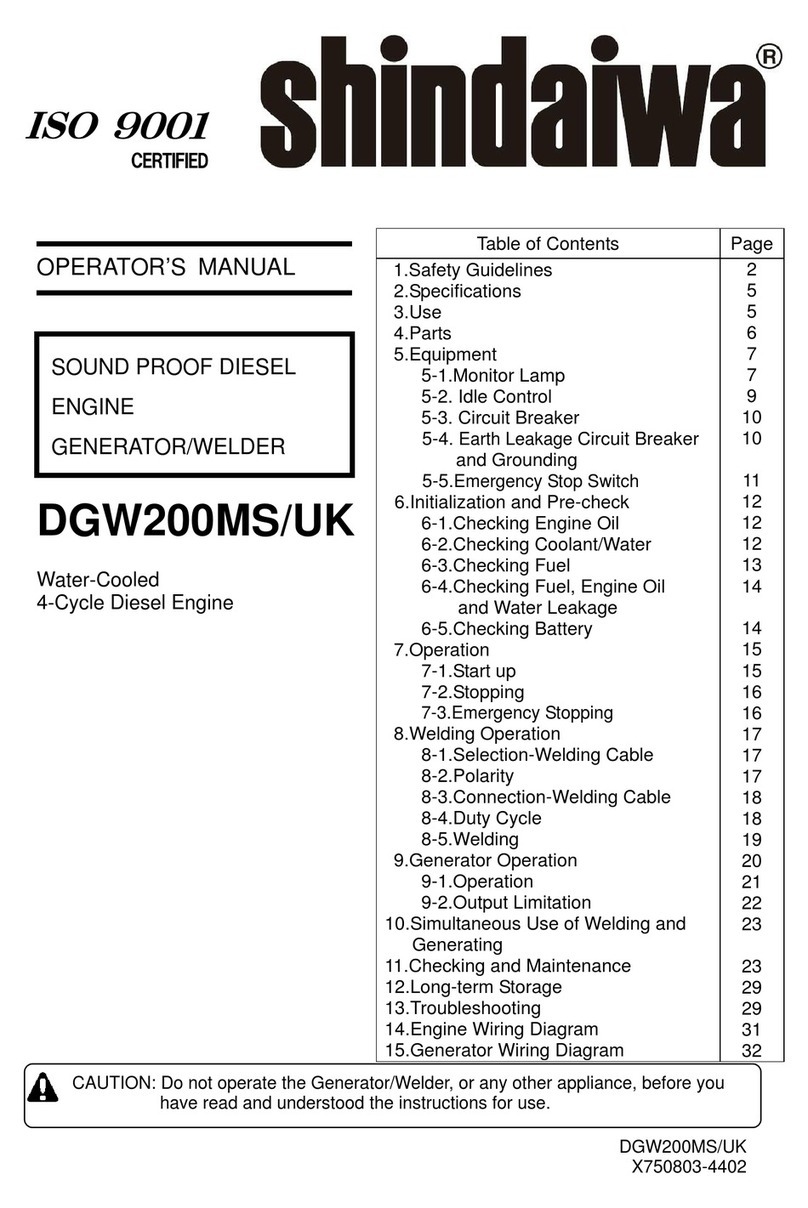
Shindaiwa
Shindaiwa DGW200MS/UK Operator's manual
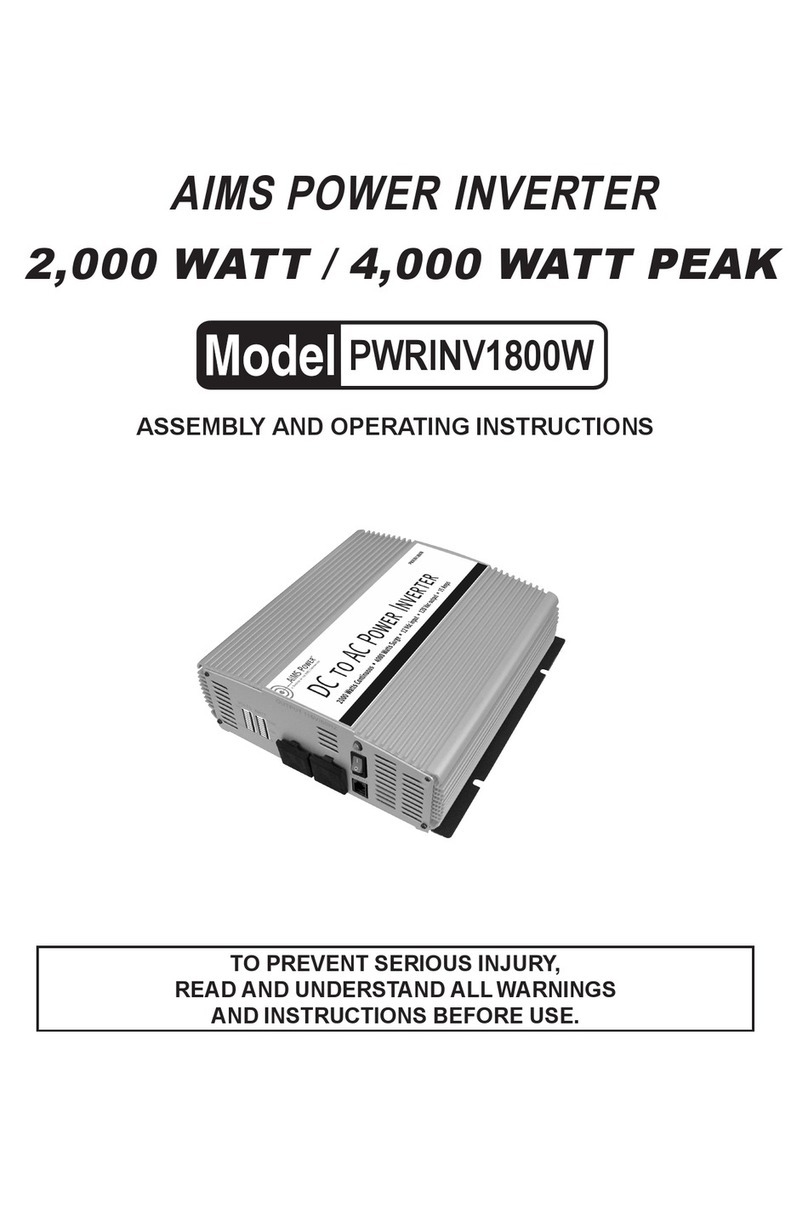
AIMS
AIMS PWRINV1800W Assembly and operating instructions
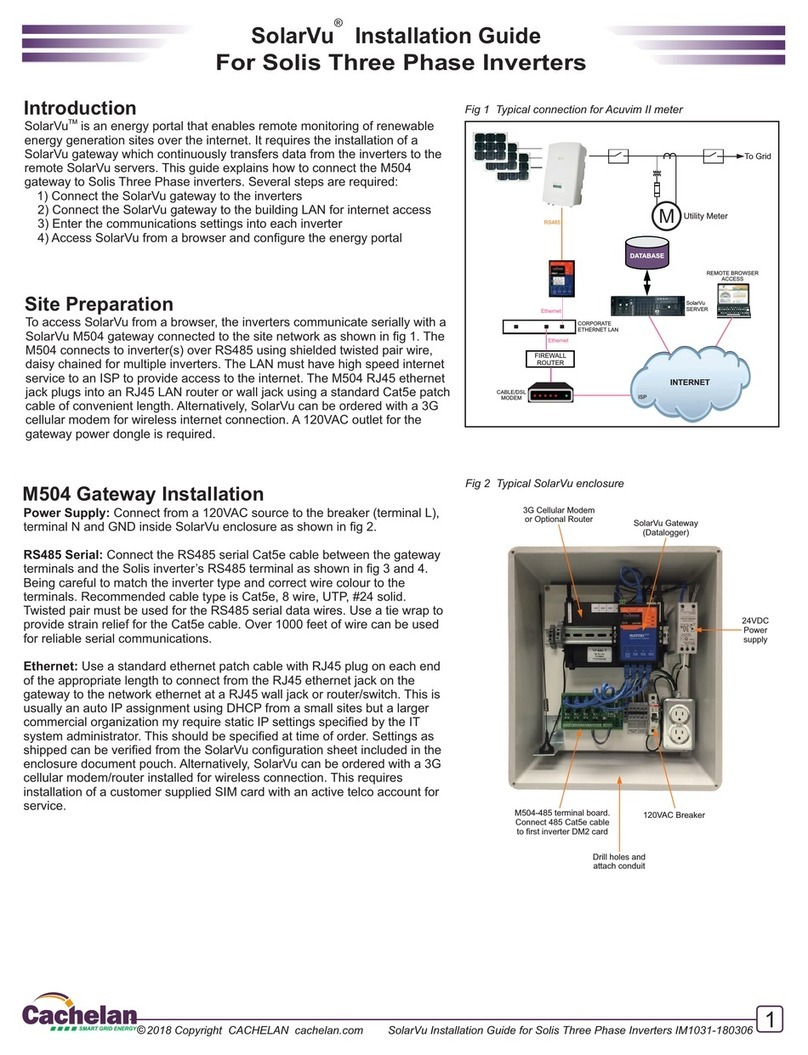
Cachelan
Cachelan SolarVu installation guide
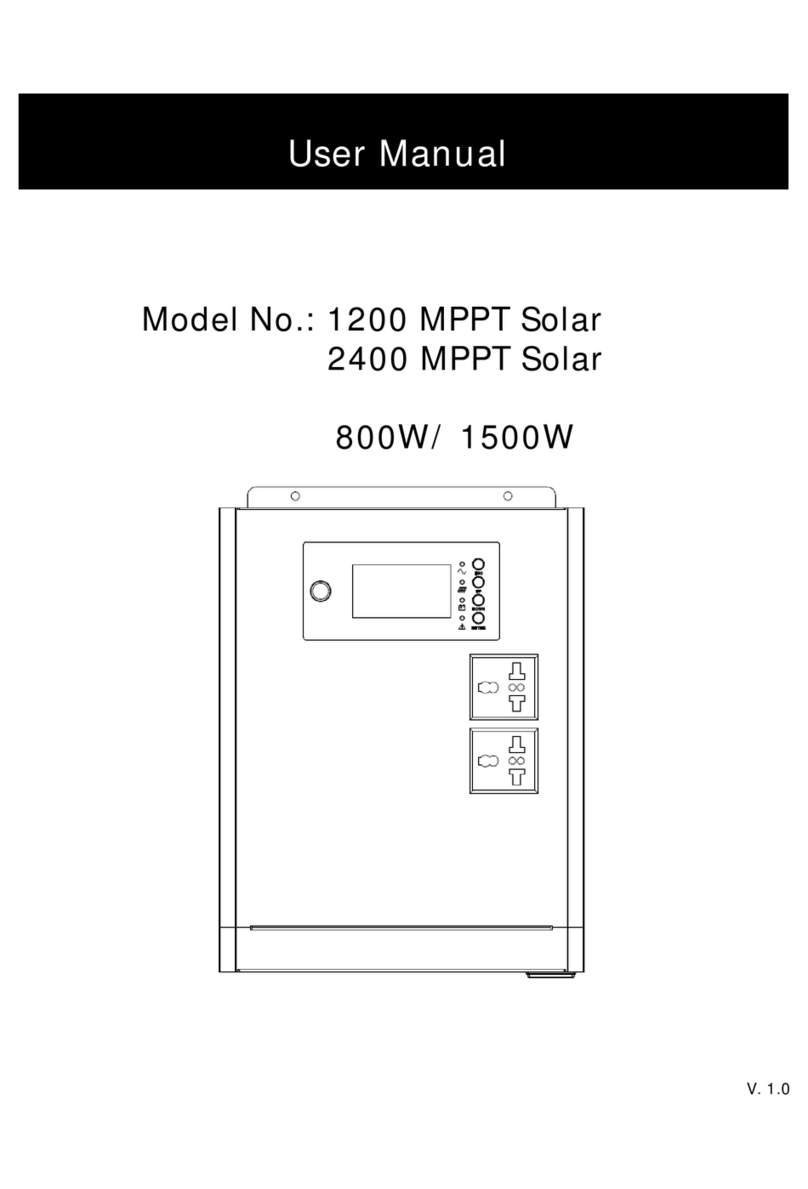
Shenzhen Pulansi Technology
Shenzhen Pulansi Technology XM 1200 user manual
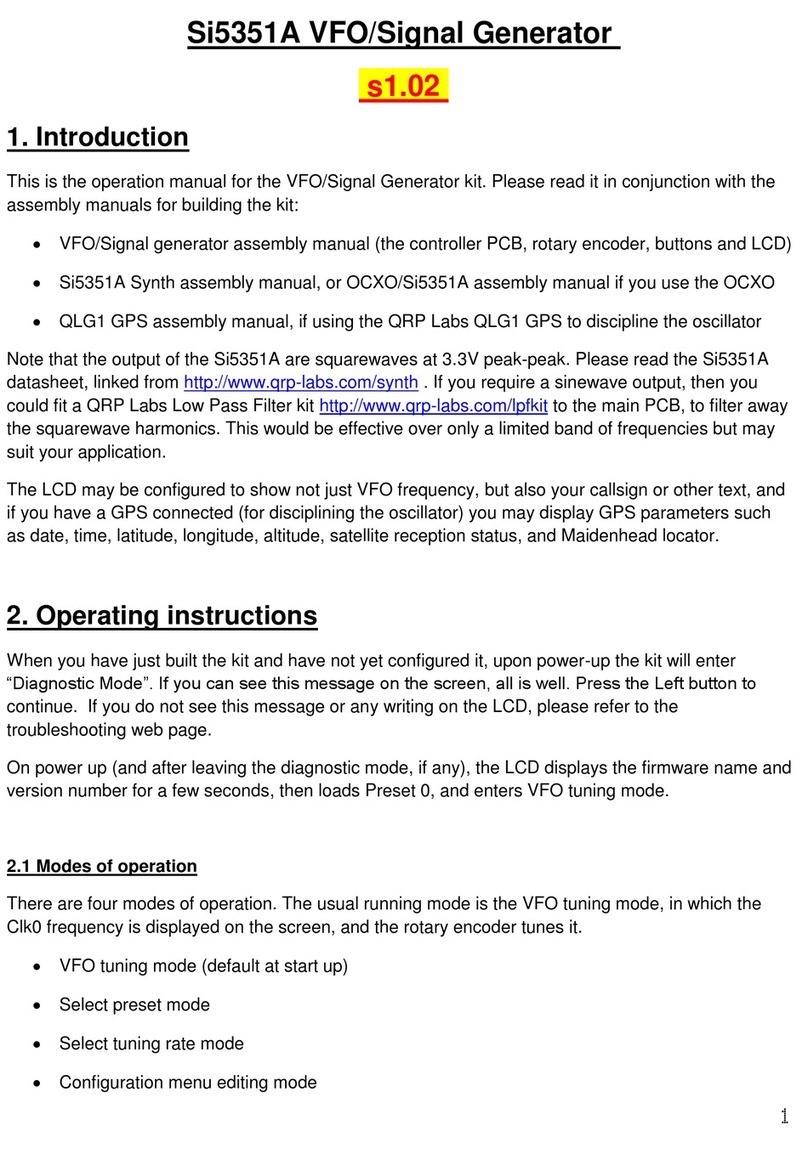
QRP Labs
QRP Labs Si5351A operating manual
